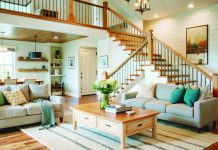
It is a well-known fact that Canada and the Netherlands share a special bond that dates back to the Second World War. What is, perhaps, a little less well-known is why. During the Nazi occupation of the Netherlands in World War II, the Dutch Royal family took refuge in Ottawa. One of the most notable events of their stay was the birth of Princess Margriet at the Ottawa Civic Hospital in 1943. To ensure the new princess’s Dutch citizenship, her hospital room was temporarily declared Dutch soil.
During 1944 and 1945, the Canadian Army played a major part in liberating the Netherlands, which they did through battles at Scheldt and the liberation of Arnhem. In May 1945, the German general Blaskowitz surrendered to the Canadian General, Charles Foulkes, officially ending the war in the Netherlands.
Towards the end of the war, many people in the Netherlands were starving. Winston Churchill’s letter to Roosevelt dated April 10, 1945 stated that, “The plight of the civil population in occupied Holland is desperate. Between two and three million people are facing starvation. We believe large numbers are dying daily.” To help these starving people, the Royal Canadian Air Force coordinated airdrops of food into densely populated areas such as Randstad. In appreciation of these efforts, the Dutch people have donated thousands of tulip bulbs to Ottawa since 1945 onwards.
For those of us who have lived in Ottawa, we are well aware of this part of Canada’s history. Every year in May, Ottawa holds their “Tulip Festival” where the Dutch contribution of tulips is complemented with well over one million more tulips that are on display throughout Ottawa. Tulips of every colour of the rainbow and every shape and size can be seen. It is one of Canada’s best outdoor events that every Canadian should experience and remains today an important reminder of a special friendship long shared by our two nations.









